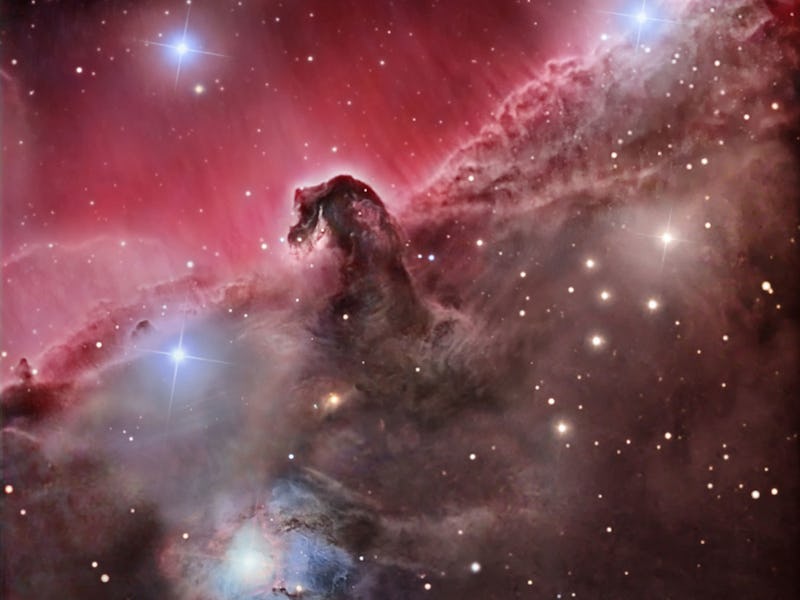Spellbinding Image Shows Horsehead Nebula Rearing its Ugly Head

A trio of amateur astronomers reined in a stunning image of one of the most distinct formations in our galaxy — the Horsehead Nebula. The astronomers captured the dark nebula’s silhouette using three telescopes in Italy.
The Horsehead Nebula is known as a dark nebula because it’s not actually giving off any light. It’s just a thick cloud of dust and gas where stars are forming, but we see it thanks to light coming from behind it, from the nebula IC 434.
There’s a lot going on in the Horsehead Nebula’s neighborhood. It’s part of the Orion cloud complex, about 1,600 light-years away in the constellation Orion, where there’s a cluster of nebulae, interstellar dust clouds, and newly formed stars. The bright blue formation in the lower left of the image is another nebula, NGC 2023, that surrounds a young star.
The Horsehead Nebula is about five light-years tall, and owes its characteristic shape to radiation and winds from nearby stars.
The Horsehead Nebula rears its head.
The nebula is also known as Barnard 33, after E.E. Barnard, who first described the formation in the early 1900s. But the Horsehead Nebula was first photographed back in 1888 by Williamina Fleming at the Harvard Observatory. Professional and amateur astronomers alike (and even Hubble) regularly turn their telescopes to the Horsehead Nebula because it’s so recognizable and an amazing example of the magic galactic winds can work.